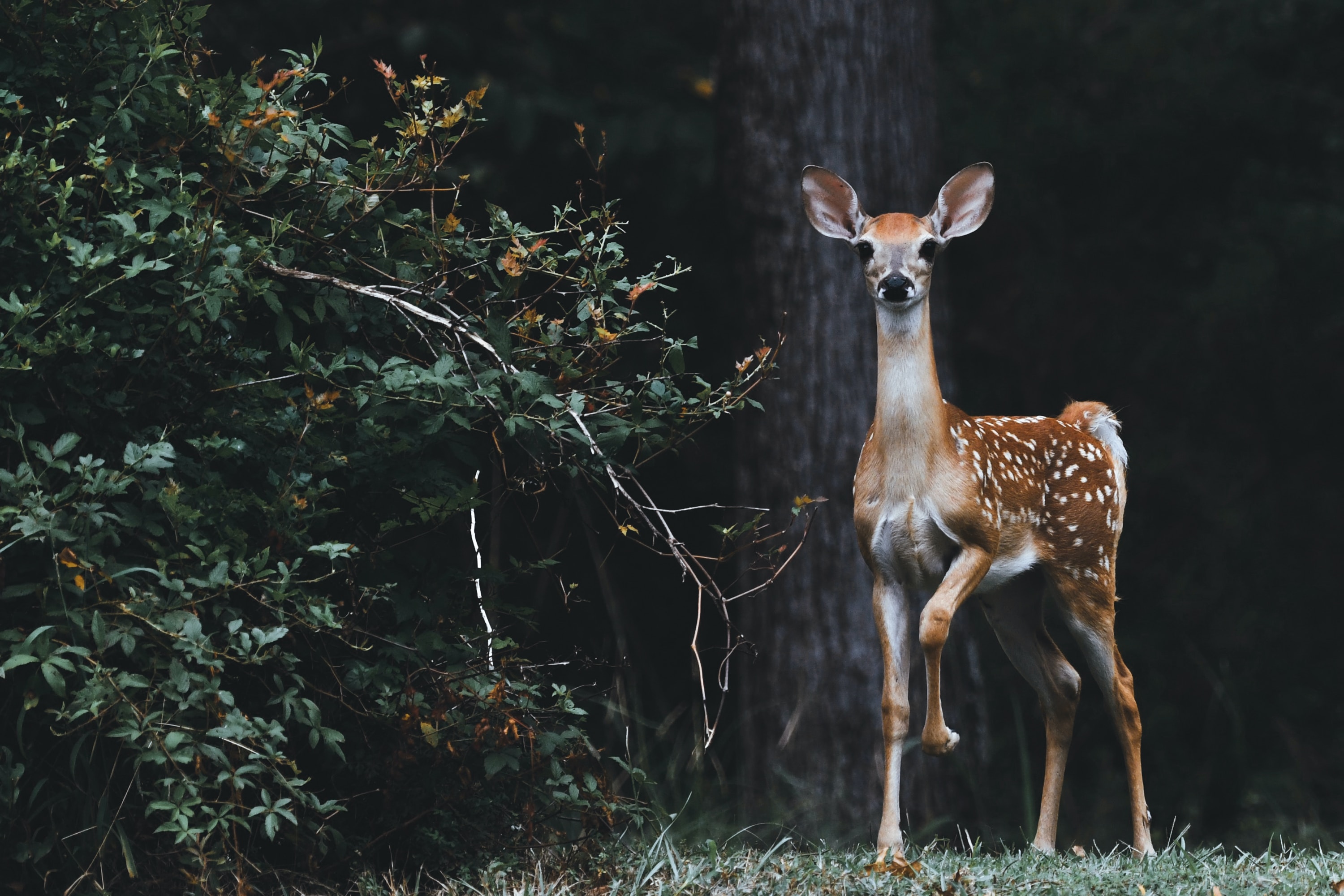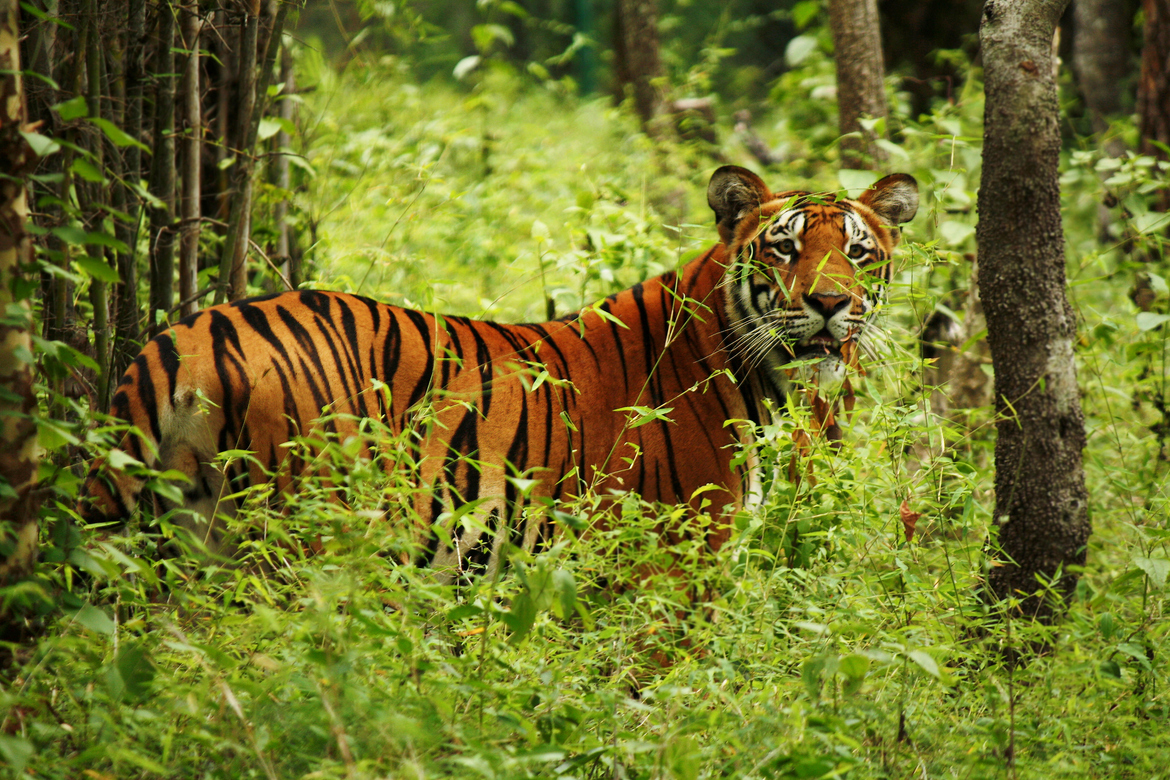
In the golden hours of twilight, as a tiger tries to hide its long shadows, a herd of spotted deer graze in tranquil oblivion. Every rustle in the bushes nearby prompts members of the herd to quickly raise their heads, look for signs of danger and then continue grazing. Yet they are unable to discern the lurking danger.
With a sudden burst of raw energy, the big cat comes out of hiding and attacks one of the deer in one seamless motion. The animal, the most favourite prey species of tigers in Nepal, does not stand a chance.
Scenes like these are very common across Nepal’s Terai landscape which endangered tigers call home. According to the Status of Tigers and Prey in Nepal 2022, chital, as they are known in Nepali, are the most preferred tiger prey in the country. According to the tigers’ diet analysis data, nearly 50 per cent of their food consists of spotted deer alone.
This means that the health and well-being of tigers, which have been the focus of intensive conservation efforts in the country since the 2010 St. Petersburg Declaration on Tiger Conservation, is directly tied with that of spotted deer.
However, Nepali researchers have yet to figure out a way to count the deer accurately, let alone assess their different population characteristics such as age or sex. The reason: They are often found in herds and it is difficult to distinguish them from other similar-sized herbivores like barking deer and hog deer, according to the survey.
Technology to the rescue

All that could change soon as researchers use vertical cameras — so the spots are visible — and the power of artificial intelligence to profile individual chital based on their spots in Nepal’s Bardiya National Park, just like individual tigers are profiled based on patterns in their fur.
A team of researchers from the University of Wageningen in the Netherlands has been collecting vertical camera images of chital and using an algorithm to count them based on the unique spots found in their pelt.
“The horizontal cameras are primarily used to count tigers in Nepal,” said JF de Jong, lecturer at the Wildlife Ecology & Conservation Group of Wageningen University, part of the team working on the project launched in 2019. “They are good at counting tigers based on their limited number, say a few hundred, but counting thousands of spotted deer is a different story,” he said.
The vertical cameras take images continuously, and technicians replace the memory cards every month. The images are then uploaded to a web platform specialising in the organisation of wildlife camera trap images and analysed using an algorithm.
However, the team has been encountering a major challenge in implementing the project. “The image recapture rate has been low,” said Jong. This means that once an individual chital has been identified and profiled by the algorithm, it is not detected again.
“This is unusual, as deer tend to live in herds and frequent the same areas for food,” said researcher Babu Ram Lamichhane, who is not involved in the project.
Jong and his team say they believe that there might be two reasons for this. First, the algorithm may not have been able to distinguish one individual from another, as it does not have training in large data sets in the wild.
“The second reason is that each camera only covers an area of 15 square meters [161.46 square feet], and that may not be sufficient to capture images of all deer,” added Jong, whose team have set up 50 cameras in an area of 50 square kilometres (19.3 square miles).
Try try until you succeed

That is the reason why researchers are training their AI model to count spotted deer more accurately at an enclosure back in the Netherlands, where they are counting fallow deer, a species similar to chital. “This is being done to refine the way the algorithm detects individual members of the species,” said Jong.
In addition to this, some researchers pointed out during a recent presentation of the project that there might be some natural causes to this. However, Jong suggested that although there is a high turnover of spotted deer in Bardiya as both predation and recruitment rates are very high, and the chital do not get to become old, the low recapture rate can be attributed to the two technical reasons.
After the algorithm is refined to a level where it can count individual deer, the data can be used to determine vital management practices to ensure the sustainability of the balance between the prey and tiger species population, said Jong.
At a broader level, the idea is to train the AI to count juveniles and adults, and perhaps males and females, to support conservation officials in deciding on management practices to make the relation between the prey base and the tigers more sustainable.
“I am convinced from the results of the tiger surveys, which profile tigers at an individual level, that this can be achieved for chital as well,” said Jong, adding that they are also considering using drone images to supplement the vertical cameras to get more accurate results.
Lamichhane added that the algorithm needs to provide some level of accuracy before it can make any difference in the management practices of Nepal’s tiger habitats.
Nepal was home to 121 tigers in 2010, the same year that it and 12 other tiger range countries agreed to double the population of the animal by 2022. Following the latest census data, the country is now home to 355 tigers.
This story first appeared on Mongabay and Onlinekhabar is republishing it under a Creative Commons licence.



















